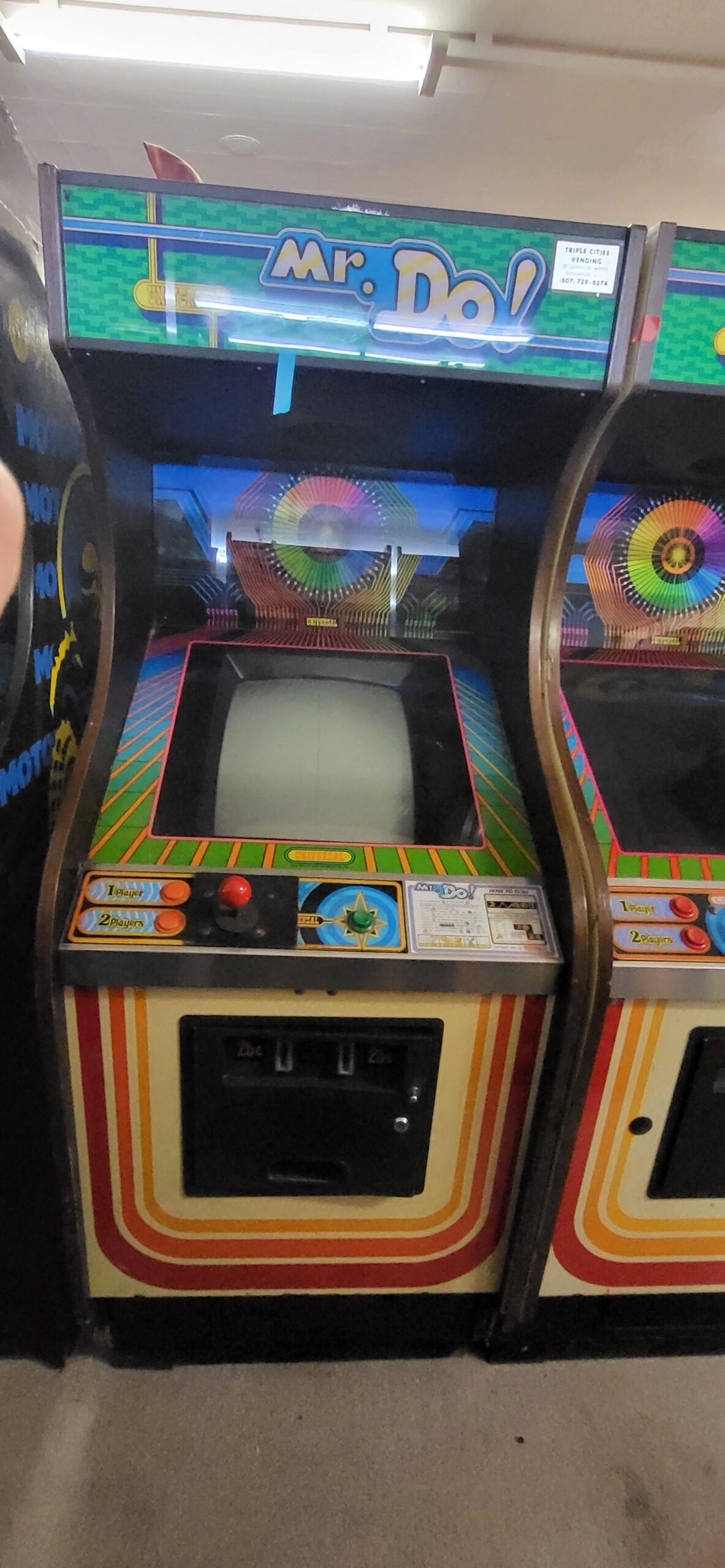
Mr. Do!
Arcade / Universal 1972
“Mr. Do!” is a classic arcade game developed by Universal in 1982. It is a single-screen action game where players control a character known as Mr. Do, who must dig tunnels and defeat enemies by either dropping apples on them or using a power ball to knock them out. The game is known for its colorful graphics, catchy music, and addictive gameplay.
Developed by Universal, “Mr. Do!” was released during the golden age of arcade gaming in 1982. It was designed by Universal’s development team as a response to the success of other maze-chase arcade games like Namco’s “Pac-Man.” “Mr. Do!” introduced unique gameplay mechanics such as digging tunnels and using the power ball, which set it apart from other games of its time.
Upon its release, “Mr. Do!” received positive reviews from both players and critics alike. It was praised for its engaging gameplay, vibrant visuals, and memorable music. The game quickly became popular in arcades around the world and cemented its place as a classic in the arcade gaming community.
“Mr. Do!” spawned several sequels and spin-offs, including “Mr. Do’s Castle” (1983), “Mr. Do’s Wild Ride” (1984), and “Do! Run Run” (1984). These games built upon the gameplay mechanics introduced in the original title while adding new features and challenges for players to enjoy.
While “Mr. Do!” arcade cabinets can still be found in the collector’s market, they are considered relatively rare compared to other arcade classics. The exact number of cabinets produced is unknown, but due to its popularity during its initial release, it is estimated that a significant number were manufactured. Depending on factors such as condition, rarity, and demand, a fully working “Mr. Do!” arcade cabinet can fetch anywhere from a few hundred to a couple thousand dollars.
“Mr. Do!” arcade cabinets typically utilized hardware common to arcade machines of the early 1980s. The main components include a CRT monitor, control panel with joystick and buttons, power supply unit, PCB (Printed Circuit Board), and audio amplifier. Replacement parts for these components can often be found through specialty arcade parts suppliers or by salvaging parts from other arcade machines of the same era. Repairing a “Mr. Do!” cabinet may involve tasks such as monitor adjustment or replacement, joystick and button maintenance, and troubleshooting electrical issues related to the PCB and power supply.


